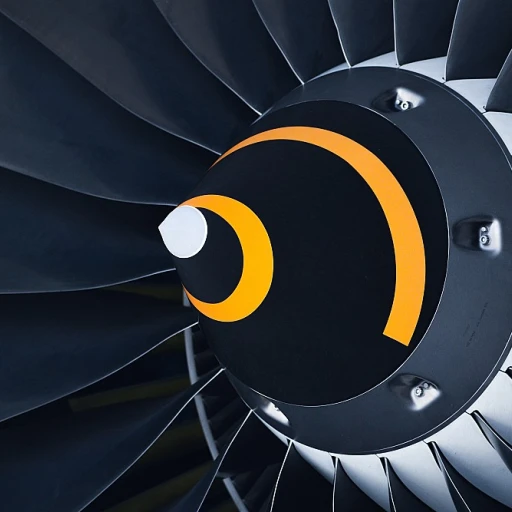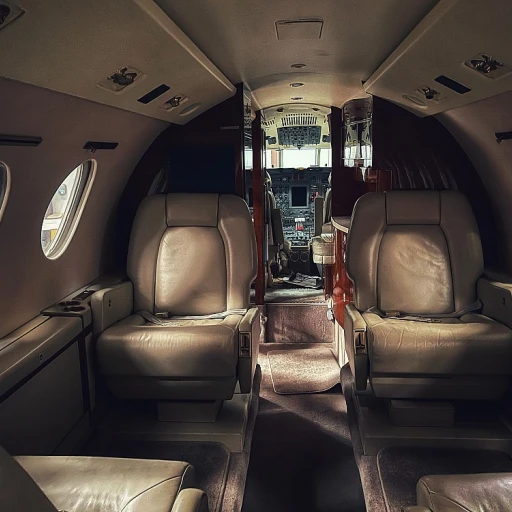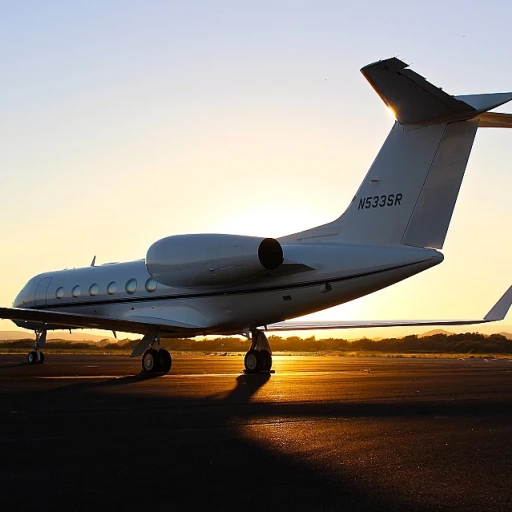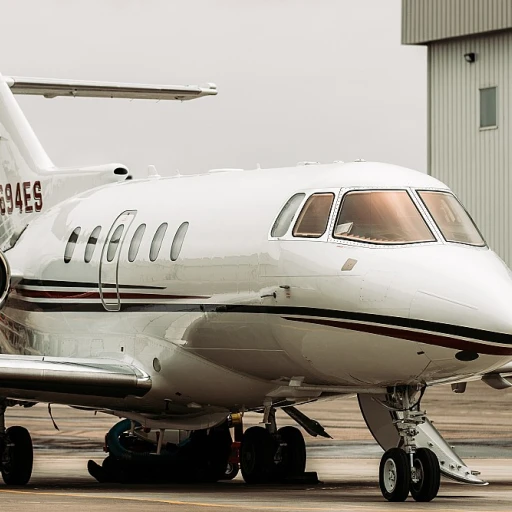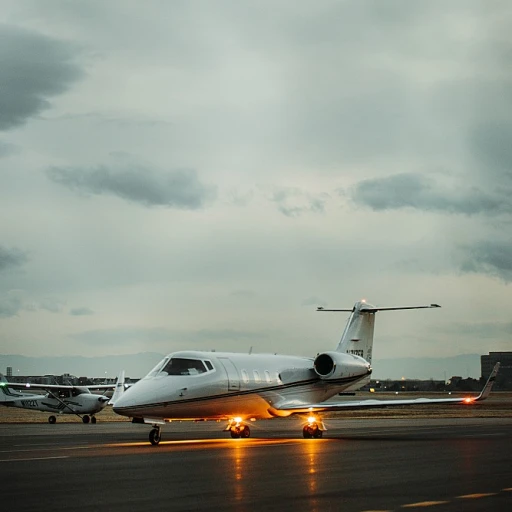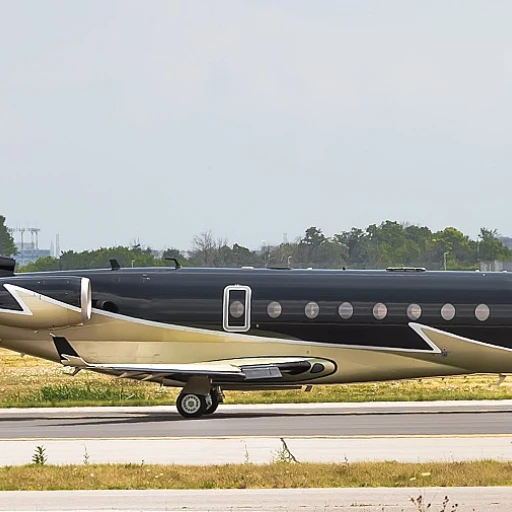
Introduction to the fastest private jets
Exploration into the realm of speed and luxury
Speed and luxury converge seamlessly in the realm of private jets. It's not just about getting from point A to point B; it’s about doing it fast, with class, and in the lap of luxury. But what exactly defines the ultimate blend of speed and elegance in these amazing flying machines?
Private jets are engineering marvels, pushing the boundaries of speed and sophistication. From the sleek Bombardier Global to the impressive Gulfstream and graceful Dassault Falcon, the evolution of private jets is nothing short of extraordinary. The question is, how fast can these jets really go, and why does speed matter in the business jet world?
Case in point: Jeff Bezos' jet
Take Jeff Bezos’ private jet as an example, a perfect blend of speed, range, and opulence. This Gulfstream model showcases the epitome of private aviation, demonstrating the industry's commitment to speed and luxury. For an in-depth look into his jet, don't miss his private jet's fascinating insides.
Ultimately, the pursuit of speed in private aviation isn't solely for record-breaking; it's for enhancing travel experiences, saving time, and reflecting technological prowess. Whether it's reaching international meetings swiftly or enjoying an elevated travel experience, the quest for faster private jets continues to drive innovation.
Top models: Bombardier Global, Gulfstream, and Dassault Falcon
The pinnacle of private jets: Bombardier Global Series
Bombardier has always been at the forefront of aviation innovation, and their Global series is no exception. The Bombardier Global 7500, for instance, reaches top speeds of Mach 0.925, equivalent to approximately 710 mph. With its ultra long range capability of 7,700 nautical miles, it effortlessly connects global hubs like New York and Hong Kong without refueling. Notable experts like Michael Amalfitano, CEO of Bombardier Business Aircraft, have emphasized the Global 7500’s cutting-edge technology and unmatched luxury.
Gulfstream's speed demons
The Gulfstream G700 and G650ER stand tall in the world of fast private jets, reaching impressive speeds of Mach 0.925 and 0.925, respectively. These jets effortlessly cover distances with long-range operational capabilities exceeding 7,500 nautical miles. With Rolls-Royce Pearl 700 engines, the Gulfstream G700 showcases exceptional performance and fuel efficiency, revolutionizing business jet travel. Larry Flynn, President of Gulfstream, often highlights the G700’s blend of performance and opulence.
Dassault Falcon's sleek innovators
Dassault Falcon jets, especially the Falcon 8X and Falcon 7X, combine speed and efficiency in a seamless package. With top speeds of Mach 0.90 (approximately 690 mph), these jets dominate the skies. The Falcon 8X, with its range of 6,450 nautical miles, provides long-haul connectivity, making it perfect for international business trips. The Falcon series is powered by Pratt & Whitney Canada engines, ensuring reliability and efficiency. Dassault’s emphasis on innovation and craftsmanship is evident, and the Falcon 7X stands as a testament to their commitment to excellence.
Noteworthy additions: Cessna Citation X+ and beyond
The Cessna Citation X+ deserves a nod for being one of the speediest jets, achieving speeds of Mach 0.935 (717 mph), and covering 3,460 nautical miles. It's powered by Rolls-Royce AE 3007C2 engines that deliver remarkable performance. The Citations's pilots and owners esteem its agility and top-tier avionics, taking business travel to new heights. Philip Grand, Cessna’s VP, says, "The Citation X+ isn’t just about speed; it’s about redefining what’s possible in private aviation."
For more insights into how these aircraft achieve their phenomenal speeds, explore our in-depth analysis on unlocking the velocity vortex.
Understanding speed: Mach, mph, and cruising speed
Mach, mph, and cruising speed: decoding the speed metrics
When it comes to the fastest private jets, speed metrics can sometimes be a bit confusing. But no worries - let’s break it down. We often hear terms like Mach, mph (miles per hour), and cruising speed. What do they mean and how do they differ?
Firstly, Mach is a ratio used to compare the speed of an object to the speed of sound in the surrounding medium. For example, if a jet is traveling at Mach 1, it is moving at the speed of sound (which is roughly 767 mph at sea level under standard conditions). Mach 2 would be twice the speed of sound, and so forth. Most private jets, however, don’t quite hit those hypersonic speeds but they can come close to it.
Next up, we have mph. This is a straightforward measure of speed in miles per hour. For example, the Gulfstream G650 has a top speed of around 610 mph. The Bombardier Global 8000, another heavy-hitter in the private jet space, reaches up to 650 mph. These jets, essentially, allow you to hit office in New York from London in no time.
Now, let's talk about cruising speed. This is the speed at which an aircraft travels once it has reached its optimal altitude, typically used to ensure fuel efficiency and comfort during the flight. For example, the Dassault Falcon 7X has a cruising speed of around 600 mph. Some jets, like those from the Gulfstream series, have impressive balance between cruising speed and top speed.
For a clearer comparison, here’s the performance data in a nutshell: the Bombardier Global 7500 can achieve Mach 0.925, whereas the Gulfstream G650ER reaches a maximum speed of Mach 0.925 as well. On the other hand, the Dassault Falcon 8X cruises smoothly at Mach 0.90.
The role of engines: Rolls-Royce and GE
The heart of speed: understanding jet engines
The engines powering the world's fastest private jets are as sophisticated as they are powerful. Major players like Rolls-Royce and General Electric (GE) have designed engines that redefine speed and efficiency in aviation. Take Rolls-Royce's Pearl engines, for example. These beasts feature the latest in turbine technology and lightweight materials. They're not just about speed, though; they significantly reduce fuel consumption, allowing jets to cover vast distances without compromising on performance or luxury. Meanwhile, GE often stands out with its Passport engines, renowned for their meticulous craftsmanship and groundbreaking engineering. Each engine blends performance with fuel efficiency, supporting jets like the Bombardier Global 7500 in covering long distances at high speeds. A case in point is the Gulfstream G700, which boasts engines developed in collaboration between Rolls-Royce and Gulfstream Aerospace. With the Rolls-Royce Pearl 700 engines, the G700 can reach speeds up to Mach 0.925 while maintaining a long-range cruise speed of Mach 0.90. These numbers translate to roughly 690 mph at cruising speed. But it's not just about speed. It’s also about reliability and durability. Engine manufacturers focus on reducing maintenance intervals and ensuring maximum uptime so that business moguls and high-flying executives never miss a beat. As a result, jets like the Dassault Falcon 8X, powered by Pratt & Whitney Canada engines, offers a luxurious yet dependable ride. With each new release, these manufacturers push the boundaries of what's possible, combining advanced materials, aerodynamic designs, and sophisticated computer modeling to deliver engines that are nothing short of breathtaking. Ever wondered if your jet is fueled by the latest advancements? Breaking the sound barrier in style: Is your jet up to speed with the latest supersonic advancements? The evolution of jet engines gives us a thrilling glimpse into the future of private aviation, promising flights that are not just faster, but also more efficient and environmentally friendly.Range and efficiency: Long-range capabilities
Real-world efficiency: Bombardier Global's remarkable performance
A standout example of exceptional range capabilities is the Bombardier Global 7500. This aircraft can fly non-stop for an impressive 7,700 nautical miles (nm), allowing for smooth, uninterrupted trips between cities like New York and Hong Kong. The Global 7500 combines speed and range without compromising on luxury, offering a cruising speed of Mach 0.85 and a maximum speed of Mach 0.925 (Global Mach mph) [source: Bombardier].
Long-range shifts with Gulfstream's high flyers
The Gulfstream G650ER is another titan in the arena of ultra-long range jets. With a maximum range of 7,500 nm and a cruising speed of Mach 0.85, the G650ER is designed to impress even the most discerning of business jet travelers. Furthermore, its top speed of Mach 0.925 allows for swift, efficient travel across vast distances [source: Gulfstream].
Dassault Falcon’s impressive distance
The Dassault Falcon 8X stands tall in the realm of long-range jets, boasting a maximum range of 6,450 nm. This aircraft can cover significant distances, such as from Singapore to London, all while maintaining a cruising speed of Mach 0.80. The Falcon 8X is a noteworthy example of how speed mach mph can be harmoniously balanced with range [source: Dassault Aviation].
Efficiency metrics
The significance of long-range capabilities cannot be overstated. For instance, the ability to reach destinations without multiple layovers not only saves precious time but also reduces the risk of delays. Maintaining high speeds over long distances, efficiency in fuel consumption, and advanced aerodynamic designs are integral to achieving such performance. Rolls-Royce engines, like the Pearl 15, power many of these jets, showcasing the critical role of top-tier engineering in aviation [source: Rolls-Royce].
Tales from the tarmac: Efficiency in action
Consider a high-powered executive who needs to split their time between Los Angeles, New York, Dubai, and London. The Bombardier Global 7500’s extensive range and rapid speed make it an ideal choice for East-West transcontinental flights. While the Gulfstream G650ER offers a similar experience, it efficiently connects sprawling business hubs without the need for reroutes, exemplifying the blend of speed and range [source: Aviation Week].
Conclusion
Overall, understanding the range and efficiency of these high-speed jets underscores the importance of choosing the right aircraft for long-haul travel. Whether it’s the Bombardier Global 7500, Gulfstream G650ER, or the Dassault Falcon 8X, each boasts remarkable features that cater to specific travel needs, ensuring a seamless experience from takeoff to landing.
Case studies: Real-world examples of fastest private jets
Jetting into the future: case studies and real-world examples
In the world of private jet travel, examples abound of fleet that are breaking speed barriers while providing utmost luxury and utility. Let's delve into some eye-catching case studies that exemplify the fastest private jets and their real-world applications.
Bombardier global express: flying top executives
The Bombardier Global Express has set itself apart as a top contender in high-speed, long-range private jets. It boasts a maximum speed of Mach 0.89 and a range of about 6,000 nautical miles. One notable example involves a top executive from a major tech company who utilized the Bombardier Global Express to attend crucial meetings across New York, London, and Singapore, all within a week. This jet saved invaluable time, making sure the executive stayed ahead in the competitive global market.
Gulfstream G650: crossing continents with style
When it comes to speed, the Gulfstream G650 is a shooting star. With its maximum speed of Mach 0.925 and a range of 7,500 nautical miles, this aircraft is a favorite among business elites. A business mogul used the G650 for an urgent transatlantic trip from Los Angeles to Dubai, showcasing its unmatched blend of speed and long-range capability. The G650's ability to maintain a high cruising speed (Mach 0.85) ensures punctuality, even on tight schedules.
Dassault falcon 7X: navigating demanding schedules
The Dassault Falcon 7X, with its top speed of Mach 0.9, has transformed how business is conducted globally. For example, a high-profile investment banker relied on the Falcon 7X to traverse multiple continents, juggling meetings in Hong Kong, London, and New York across a span of just several days. Its long-range capability (5,950 nautical miles) allowed for non-stop travel, ensuring efficiency and productivity.
Cessna citation X+: efficiency in motion
The Cessna Citation X+ holds the title of the fastest private jet with a top speed of Mach 0.935, capable of cutting travel times significantly. A prime instance involves a commercial real estate developer who flew from New York to Los Angeles, saving nearly an hour of flight time compared to conventional jets. This increase in speed not only uplifts the status of the Cessna Citation X+ but also provides significant time savings for its users.
Critical insights from the field
Experts like Richard Aboulafia, Vice President of Analysis at Teal Group, emphasize that speed is a critical factor but so are range and operational efficiency (source: Forbes). Real-world usage of these aircraft supports the balance needed between speed, range, and comfort to meet the growing demands of the business aviation sector.
Concluding remarks
The fastest private jets are more than just marvels of aviation—they are crucial tools for high-stakes business executives, government officials, and luxury travelers who demand the best. Case studies illustrate how these jets meet the demands of their high-flying clientele, making speed and efficiency non-negotiable aspects of their operations.
Controversies and challenges in high-speed private aviation
Challenges of breaking the speed barrier
The quest for speed in the realm of private jets has not been without its hurdles. Let's delve into some of the most significant challenges that have emerged. Achieving speeds that exceed Mach 0.90, for instance, often requires advanced engineering and substantial financial investment. Both Bombardier and Dassault have found ways to balance speed and luxury, but not without facing significant technical obstacles.Engine limitations and noise concerns
One key issue in achieving higher speeds involves engine performance. Rolls-Royce and GE, giants in the aviation industry, have been working tirelessly to develop engines that can handle the stress of higher speeds. However, as speeds increase, so do noise levels, which can be a problem for both passengers and those on the ground. According to FAA regulations, private jets must comply with strict noise standards, limiting the extent to which engines can be modified for speed.Safety concerns at higher altitudes and speeds
Another complication is safety. Faster jets often operate at higher altitudes, which introduces a set of risks. Pilots require specialized training to handle these planes, and even small technical malfunctions can have severe consequences. Given these risks, insurance companies often charge a premium for faster jets, making them less accessible to potential buyers.Economic and environmental impact
Flying at Mach speeds isn't just a technical marvel—it's also an economic and environmental concern. Faster jets consume more fuel, which makes them less sustainable and more expensive to operate. Studies have shown that a jet like the Gulfstream G650ER can burn through approximately 5,000 pounds of fuel per hour when cruising at high speeds, significantly more than slower jets. This not only increases operational costs but also its environmental footprint.Regulatory restrictions
Despite advancements, regulatory bodies like the FAA and EASA have stringent guidelines that limit the operation of high-speed jets. These regulations extend to everything from noise pollution to emissions, making it challenging for manufacturers to push the envelope without huge financial and compliance burdens.Embracing the challenges
Nevertheless, manufacturers like Bombardier and Dassault continue to innovate, addressing these challenges head-on. Dassault Falcon's use of advanced composites has aided in reducing weight and improving efficiency, while Bombardier's Global series has been lauded for its groundbreaking range and speed capabilities. Understanding these challenges allows us to appreciate the incredible engineering that goes into the fastest private jets. As technology evolves, it's exciting to imagine what the next generation of private jets will bring, despite the hurdles ahead.Future trends: Innovations and advancements in private jet speed
Advances in ultra-long-range capabilities
Private jets have come a long way since their inception, with continuous advancements pushing the boundaries of speed and range. These jets are not just about luxury; they also symbolize progress in aviation technology. A key trend dominating the skies is the development of ultra-long-range capabilities, allowing these aircraft to cover significant distances non-stop. Leading the pack in this innovation are Bombardier, Gulfstream, and Dassault.The Bombardier Global 7500, for instance, boasts an impressive range of up to 7,700 nautical miles. Powered by GE's Passport engines, this aircraft can fly non-stop from New York to Hong Kong. The Global 7500 emphasizes both range and speed, cruising at Mach 0.85 and reaching a top speed of Mach 0.925. This combination makes it a favorite among business executives who need to travel quickly across vast distances.
Gulfstream's flagship, the G650ER, is another standout in the ultra-long-range category. With a range of 7,500 nautical miles and powered by Rolls-Royce BR725 engines, the G650ER offers extraordinary performance. It matches the Bombardier Global 7500 in top speed, also reaching Mach 0.925 and maintaining a cruising speed of Mach 0.85. It has set numerous city-pair speed records, proving its efficiency and reliability in real-world scenarios.
Dassault Falcon's 8X, although slightly lesser in range with 6,450 nautical miles, still offers remarkable performance thanks to its efficient Pratt & Whitney Canada PW307D engines. The Falcon 8X's maximum speed of Mach 0.9 ensures swift intercontinental travel.
Sustainable innovations
The push for higher speeds and longer ranges goes hand-in-hand with the quest for sustainability in aviation. Enhancements in engine technology not only improve performance but also reduce carbon footprints. Rolls-Royce and GE are leading the charge with engines that maximize fuel efficiency while minimizing emissions.
A significant milestone in sustainability comes from the introduction of biofuels and the development of hybrid-electric propulsion systems. These innovations aim to make high-speed private aviation more eco-friendly. For instance, Gulfstream plans to integrate sustainable aviation fuel (SAF) into its operations, a move that aligns with global efforts to reduce carbon emissions.
Hyper-speed breakthroughs
Another intriguing trend is the potential for supersonic private jets. While commercial supersonic travel has been historic, the idea of private jets breaking the sound barrier is gaining traction. Companies like Boom Supersonic and Aerion are developing jets that promise speeds over Mach 1. These endeavors signal a future where business executives could travel from New York to London in just three hours.
These advancements are not without challenges, from regulatory hurdles to technological barriers. The FAA and other global aviation authorities will play a crucial role in shaping the future of supersonic private jets.
Technology integration and passenger experience
Modern private jets are becoming smarter with advanced avionics and enhanced passenger experiences. From sophisticated cockpit systems to luxury interiors equipped with the latest entertainment and communication technologies, the focus is on providing a seamless and luxurious experience.
Take the example of the Bombardier Global 7500, which features the Nuage seat designed for ultimate comfort, and its cabin management system that controls lighting, climate, and entertainment with a touch. Similarly, Gulfstream’s PlaneView II cockpit integrates advanced avionics that enhance pilot situational awareness and safety.
The trend towards connected cabins means passengers can stay productive and entertained at 40,000 feet, turning private jets into flying offices or luxury lounges.
Future of personal air travel
As technology continues to evolve, the future of private jets looks promising with further advances in speed, range, and sustainability. The ongoing investments in research and development by aviation giants like Bombardier, Gulfstream, and Dassault suggest that the race for the fastest, most efficient, and luxurious private jet is far from over. The skies are set to get faster, greener, and more luxurious.
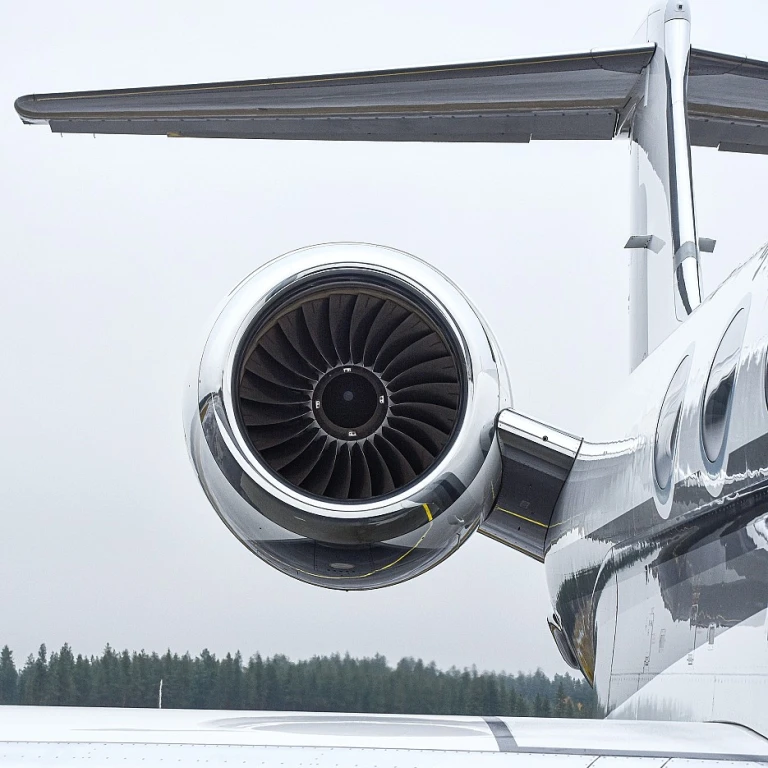
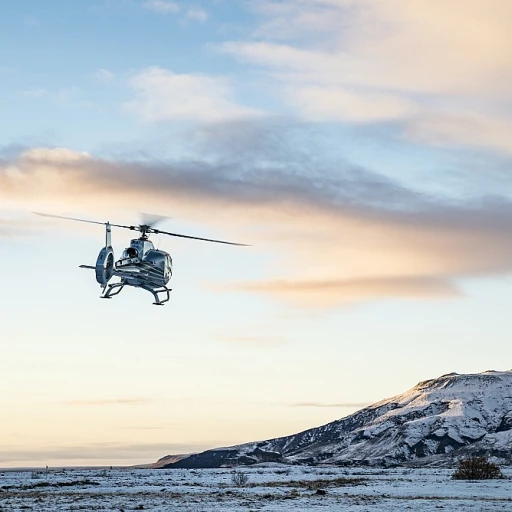
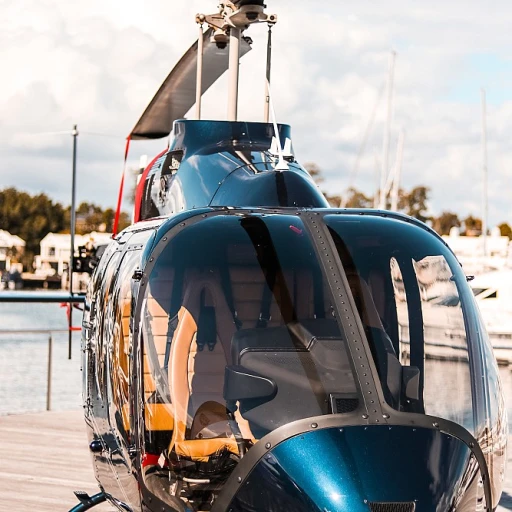


-large-teaser.webp)
